Social networking sites or social media is an online platform which people use to build social networks or social relationships with other people who share similar personal or career interests, activities, backgrounds or real-life connections.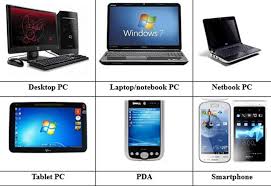
Social networking services vary in format and the number of features. They can incorporate a range of new information and communication tools, operating on desktops and on laptops, on mobile devices such as tablet computers and smartphones. They may feature digital photo/video/sharing and diary entries online (blogging).
Online community services are sometimes considered social-network services by developers and users, though in a broader sense, a social-network service usually provides an individual-centered service whereas online community services are group-centered. Defined as “websites that facilitate the building of a network of contacts in order to exchange various types of content online,” social networking sites provide a space for interaction to continue beyond in person interactions. These computer mediated interactions link members of various networks and may help to both maintain and develop new social and professional relationships.
Sharing Ideas, Digital Photos, Videos, and Posts
 Social networking sites allow users to share ideas, digital photos and videos, posts, and to inform others about online or real-world activities and events with people in their network. While in-person social networking – such as gathering in a village market to talk about events – has existed since the earliest development of towns, the web enables people to connect with others who live in different locations, ranging from across a city to across the world. Depending on the social media platform, members may be able to contact any other member. In other cases, members can contact anyone they have a connection to, and subsequently anyone that contact has a connection to, and so on. The success of social networking services can be seen in their dominance in society today, with Facebook having a massive 2.13 billion active monthly users and an average of 1.4 billion daily active users in 2017. LinkedIn, a career-oriented social-networking service, generally requires that a member personally know another member in real life before they contact them online. Some services require members to have a preexisting connection to contact other members.
Social networking sites allow users to share ideas, digital photos and videos, posts, and to inform others about online or real-world activities and events with people in their network. While in-person social networking – such as gathering in a village market to talk about events – has existed since the earliest development of towns, the web enables people to connect with others who live in different locations, ranging from across a city to across the world. Depending on the social media platform, members may be able to contact any other member. In other cases, members can contact anyone they have a connection to, and subsequently anyone that contact has a connection to, and so on. The success of social networking services can be seen in their dominance in society today, with Facebook having a massive 2.13 billion active monthly users and an average of 1.4 billion daily active users in 2017. LinkedIn, a career-oriented social-networking service, generally requires that a member personally know another member in real life before they contact them online. Some services require members to have a preexisting connection to contact other members.
The main types of social networking services contain category places (such as age or occupation or religion), means to connect with friends (usually with self-description pages), and a recommendation system linked to trust. One can categorize social-network services into four types:
 socializing social network services used primarily for socializing with existing friends (e.g., Facebook)
socializing social network services used primarily for socializing with existing friends (e.g., Facebook)- online social networks are decentralized and distributed computer networks where users communicate with each other through internet services.
- networking social network services used primarily for non-social interpersonal communication (e.g., LinkedIn, a career- and employment-oriented site)
- social navigation social network services used primarily for helping users to find specific information or resources (e.g., Goodreads for books)
There have been attempts to standardize these services to avoid the need to duplicate entries of friends and interests (see the FOAF standard). A study reveals that India recorded world’s largest growth in terms of social media users in 2013. A 2013 survey found that 73% of U.S. adults use social-networking sites.
The History of Newly Improved Forms of Computer-Mediated Social Interaction
 The potential for computer networking to facilitate newly improved forms of computer-mediated social interaction was suggested early on. Efforts to support social networks via computer-mediated communication were made in many early online services, including Usenet, ARPANET, LISTSERV, and bulletin board services (BBS). Many prototypical features of social networking sites were also present in online services such as America Online, Prodigy, CompuServe, ChatNet, and The WELL.
The potential for computer networking to facilitate newly improved forms of computer-mediated social interaction was suggested early on. Efforts to support social networks via computer-mediated communication were made in many early online services, including Usenet, ARPANET, LISTSERV, and bulletin board services (BBS). Many prototypical features of social networking sites were also present in online services such as America Online, Prodigy, CompuServe, ChatNet, and The WELL.
 Early social networking on the World Wide Web began in the form of generalized online communities such as Theglobe.com (1995), Geocities (1994) and Tripod.com (1995). Many of these early communities focused on bringing people together to interact with each other through chat rooms and encouraged users to share personal information and ideas via personal web pages by providing easy-to-use publishing tools and free or inexpensive web space. Some communities – such as Classmates.com – took a different approach by simply having people link to each other via email addresses. PlanetAll started in 1996.
Early social networking on the World Wide Web began in the form of generalized online communities such as Theglobe.com (1995), Geocities (1994) and Tripod.com (1995). Many of these early communities focused on bringing people together to interact with each other through chat rooms and encouraged users to share personal information and ideas via personal web pages by providing easy-to-use publishing tools and free or inexpensive web space. Some communities – such as Classmates.com – took a different approach by simply having people link to each other via email addresses. PlanetAll started in 1996.
 In the late 1990s, user profiles became a central feature of social networking sites, allowing users to compile lists of “friends” and search for other users with similar interests. New social networking methods were developed by the end of the 1990s, and many sites began to develop more advanced features for users to find and manage friends. Open Diary, a community for online diarists, invented both friends-only content and the reader comment, two features of social networks important to user interaction.
In the late 1990s, user profiles became a central feature of social networking sites, allowing users to compile lists of “friends” and search for other users with similar interests. New social networking methods were developed by the end of the 1990s, and many sites began to develop more advanced features for users to find and manage friends. Open Diary, a community for online diarists, invented both friends-only content and the reader comment, two features of social networks important to user interaction.
This newer generation of social networking sites began to flourish with the emergence of SixDegrees in 1997, followed by Open Diary in 1998, Mixi in 1999, Makeoutclub in 2000, Hub Culture in 2002, 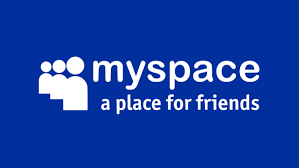 Friendster and Canada’s first online social network Nexopia in 2003, and soon became part of the Internet mainstream. However, thanks to the nation’s high Internet penetration rate, the first mass social networking site was the South Korean service, Cyworld, launched as a blog-based site in 1999 and social networking features added in 2001. It also became one of the first companies to profit from the sale of virtual goods. Friendster was followed by MySpace and LinkedIn the same year, and eventually Bebo.
Friendster and Canada’s first online social network Nexopia in 2003, and soon became part of the Internet mainstream. However, thanks to the nation’s high Internet penetration rate, the first mass social networking site was the South Korean service, Cyworld, launched as a blog-based site in 1999 and social networking features added in 2001. It also became one of the first companies to profit from the sale of virtual goods. Friendster was followed by MySpace and LinkedIn the same year, and eventually Bebo.
 Friendster became very popular in the Pacific Islands. Orkut became the first popular social networking service in Brazil (although most of its very first users were from the United States) and quickly grew in popularity in India (Madhavan, 2007). Attesting to the rapid increase in social networking sites’ popularity, by 2005, it was reported that Myspace was getting more page views than Google. Facebook, launched in 2004, became the largest social networking site in the world in early 2009. Facebook was first introduced as a Harvard social networking site, expanding to other universities and eventually, anyone. The term social media was introduced and soon became widespread.
Friendster became very popular in the Pacific Islands. Orkut became the first popular social networking service in Brazil (although most of its very first users were from the United States) and quickly grew in popularity in India (Madhavan, 2007). Attesting to the rapid increase in social networking sites’ popularity, by 2005, it was reported that Myspace was getting more page views than Google. Facebook, launched in 2004, became the largest social networking site in the world in early 2009. Facebook was first introduced as a Harvard social networking site, expanding to other universities and eventually, anyone. The term social media was introduced and soon became widespread.
The Social Impact of Networking Through The Internet
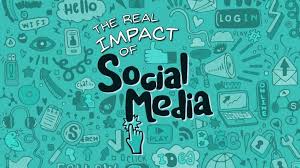 Web-based social networking services make it possible to connect people who share interests and activities across political, economic, and geographic borders. Through e-mail and instant messaging, online communities are created where a gift economy and reciprocal altruism are encouraged through cooperation. Information is suited to a gift economy, as information is a non-rival good and can be gifted at practically no cost. Scholars have noted that the term “social” cannot account for technological features of the social network platforms alone.
Web-based social networking services make it possible to connect people who share interests and activities across political, economic, and geographic borders. Through e-mail and instant messaging, online communities are created where a gift economy and reciprocal altruism are encouraged through cooperation. Information is suited to a gift economy, as information is a non-rival good and can be gifted at practically no cost. Scholars have noted that the term “social” cannot account for technological features of the social network platforms alone.  Hence, the level of network sociability should determine by the actual performances of its users. According to the communication theory of uses and gratifications, an increasing number of individuals are looking to the Internet and social media to fulfill cognitive, affective, personal integrative, social integrative, and tension free needs. With Internet technology as a supplement to fulfill needs, it is in turn affecting every day life, including relationships, school, church, entertainment, and family. Companies are using social media as a way to learn about potential employees’ personalities and behavior. In numerous situations, a candidate who might otherwise have been hired has been rejected due to offensive or otherwise unseemly photos or comments posted to social networks or appearing on a news-feed.
Hence, the level of network sociability should determine by the actual performances of its users. According to the communication theory of uses and gratifications, an increasing number of individuals are looking to the Internet and social media to fulfill cognitive, affective, personal integrative, social integrative, and tension free needs. With Internet technology as a supplement to fulfill needs, it is in turn affecting every day life, including relationships, school, church, entertainment, and family. Companies are using social media as a way to learn about potential employees’ personalities and behavior. In numerous situations, a candidate who might otherwise have been hired has been rejected due to offensive or otherwise unseemly photos or comments posted to social networks or appearing on a news-feed.
 Facebook and other social networking tools are increasingly the aims of scholarly research. Scholars in many fields have begun to investigate the impact of social networking sites, investigating how such sites may play into issues of identity, politics, privacy, social capital, youth culture, and education. Research has also suggested that individuals add offline friends on Facebook to maintain contact and often this blurs the lines between work and home lives. Users from around the world also utilize social networking sites as an alternative news source. While social networking sites have arguably changed how we access the news, users tend to have mixed opinions about the reliability of content accessed through these sites.
Facebook and other social networking tools are increasingly the aims of scholarly research. Scholars in many fields have begun to investigate the impact of social networking sites, investigating how such sites may play into issues of identity, politics, privacy, social capital, youth culture, and education. Research has also suggested that individuals add offline friends on Facebook to maintain contact and often this blurs the lines between work and home lives. Users from around the world also utilize social networking sites as an alternative news source. While social networking sites have arguably changed how we access the news, users tend to have mixed opinions about the reliability of content accessed through these sites.
 According to a study in 2015, 63% of the users of Facebook or Twitter in the USA consider these networks to be their main source of news, with entertainment news being the most seen. In the times of breaking news, Twitter users are more likely to stay invested in the story. In some cases when the news story is more political, users may be more likely to voice their opinion on a linked Facebook story with a comment or like, while Twitter users will just follow the sites feed and/ or retweet the article.
According to a study in 2015, 63% of the users of Facebook or Twitter in the USA consider these networks to be their main source of news, with entertainment news being the most seen. In the times of breaking news, Twitter users are more likely to stay invested in the story. In some cases when the news story is more political, users may be more likely to voice their opinion on a linked Facebook story with a comment or like, while Twitter users will just follow the sites feed and/ or retweet the article.
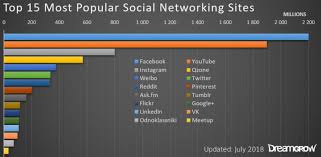 A 2015 study shows that 85% of people aged 18 to 34 use social networking sites for their purchase decision making. While over 65% of people aged 55 and over-rely on word of mouth. Several websites are beginning to tap into the power of the social networking model for philanthropy. Such models provide a means for connecting otherwise fragmented industries and small organizations without the resources to reach a broader audience with interested users. Social networks are providing a different way for individuals to communicate digitally. These communities of hyper texts allow for the sharing of information and ideas, an old concept placed in a digital environment. In 2011, HCL Technologies conducted research that showed that 50% of British employers had banned the use of social networking sites/services during office hours.
A 2015 study shows that 85% of people aged 18 to 34 use social networking sites for their purchase decision making. While over 65% of people aged 55 and over-rely on word of mouth. Several websites are beginning to tap into the power of the social networking model for philanthropy. Such models provide a means for connecting otherwise fragmented industries and small organizations without the resources to reach a broader audience with interested users. Social networks are providing a different way for individuals to communicate digitally. These communities of hyper texts allow for the sharing of information and ideas, an old concept placed in a digital environment. In 2011, HCL Technologies conducted research that showed that 50% of British employers had banned the use of social networking sites/services during office hours.
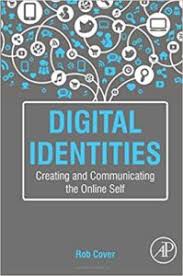 Research has provided us with mixed results as to whether or not a person’s involvement in social networking can affect their feelings of loneliness. Studies have indicated that how a person chooses to use social networking can change their feelings of loneliness in either a negative or positive way. Some companies with mobile workers have encouraged their workers to use social networking to feel connected. Educators are using social networking to stay connected with their students whereas individuals use it to stay connected with their close relationships. Each social networking user is able to create a community that centers around a personal identity they choose to create online. In his book Digital Identities: Creating and Communicating the Online Self, Rob Cover argues that social networking’s foundation in Web 2.0, high-speed networking shifts online representation to one which is both visual and relational to other people, complexifying the identity process for younger people and creating new forms of anxiety. In 2016, news reports stated that excessive usage of SNS sites may be associated with an increase in the rates of depression, to almost triple the rate for non-SNS users. Experts worldwide have said that 2030 people who use SNS more have higher levels of depression than those who use SNS less. At least one study went as far as to conclude that the negative effects of Facebook usage are equal to or greater than the positive effects of face-to-face interactions.
Research has provided us with mixed results as to whether or not a person’s involvement in social networking can affect their feelings of loneliness. Studies have indicated that how a person chooses to use social networking can change their feelings of loneliness in either a negative or positive way. Some companies with mobile workers have encouraged their workers to use social networking to feel connected. Educators are using social networking to stay connected with their students whereas individuals use it to stay connected with their close relationships. Each social networking user is able to create a community that centers around a personal identity they choose to create online. In his book Digital Identities: Creating and Communicating the Online Self, Rob Cover argues that social networking’s foundation in Web 2.0, high-speed networking shifts online representation to one which is both visual and relational to other people, complexifying the identity process for younger people and creating new forms of anxiety. In 2016, news reports stated that excessive usage of SNS sites may be associated with an increase in the rates of depression, to almost triple the rate for non-SNS users. Experts worldwide have said that 2030 people who use SNS more have higher levels of depression than those who use SNS less. At least one study went as far as to conclude that the negative effects of Facebook usage are equal to or greater than the positive effects of face-to-face interactions.
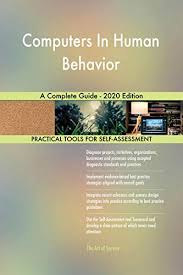 According to a recent article from Computers in Human Behavior, Facebook has also been shown to lead to issues of social comparison. Users are able to select which photos and status updates to post, allowing them to portray their lives in acclamatory manners. These updates can lead to other users feeling like their lives are inferior by comparison. Users may feel especially inclined to compare themselves to other users with whom they share similar characteristics or lifestyles, leading to a fairer comparison. Motives for these comparisons can be associated with the goals of improving oneself by looking at profiles of people who one feels are superior, especially when their lifestyle is similar and possible. One can also self-compare to make oneself feel superior to others by looking at the profiles of users who one believes to be worse off. However, a study by the Harvard Business Review shows that these goals often lead to negative consequences, as use of Facebook has been linked with lower levels of well-being; mental health has been shown to decrease due to the use of Facebook. Computers in Human Behavior emphasizes that these feelings of poor mental health have been suggested to cause people to take time off from their Facebook accounts; this action is called “Facebook Fatigue” and has been common in recent years.
According to a recent article from Computers in Human Behavior, Facebook has also been shown to lead to issues of social comparison. Users are able to select which photos and status updates to post, allowing them to portray their lives in acclamatory manners. These updates can lead to other users feeling like their lives are inferior by comparison. Users may feel especially inclined to compare themselves to other users with whom they share similar characteristics or lifestyles, leading to a fairer comparison. Motives for these comparisons can be associated with the goals of improving oneself by looking at profiles of people who one feels are superior, especially when their lifestyle is similar and possible. One can also self-compare to make oneself feel superior to others by looking at the profiles of users who one believes to be worse off. However, a study by the Harvard Business Review shows that these goals often lead to negative consequences, as use of Facebook has been linked with lower levels of well-being; mental health has been shown to decrease due to the use of Facebook. Computers in Human Behavior emphasizes that these feelings of poor mental health have been suggested to cause people to take time off from their Facebook accounts; this action is called “Facebook Fatigue” and has been common in recent years.
Usage of social networking has contributed to a new form of abusive communication, and academic research has highlighted a number of social-technological explanations for this behaviour. These including the anonymity afforded by interpersonal communications, factors that include boredom or attention seeking, or the result of more polarized online debate. The impact in this abuse has found impacts through the prevalence of online cyber-bullying, and online trolling. There has also been a marked increase in political violence and abuse through social media platforms. For instance, one study by Ward and McLoughlin found that 2.57% of all messages sent to UK MPs on Twitter were found to contain abusive messages.
I hope that you have really enjoyed this post, you might also be interested in other information which can be found in JMJ45TECH’s ONLINE STORE.
Please Leave All Comments in the Comment Box Below ↓



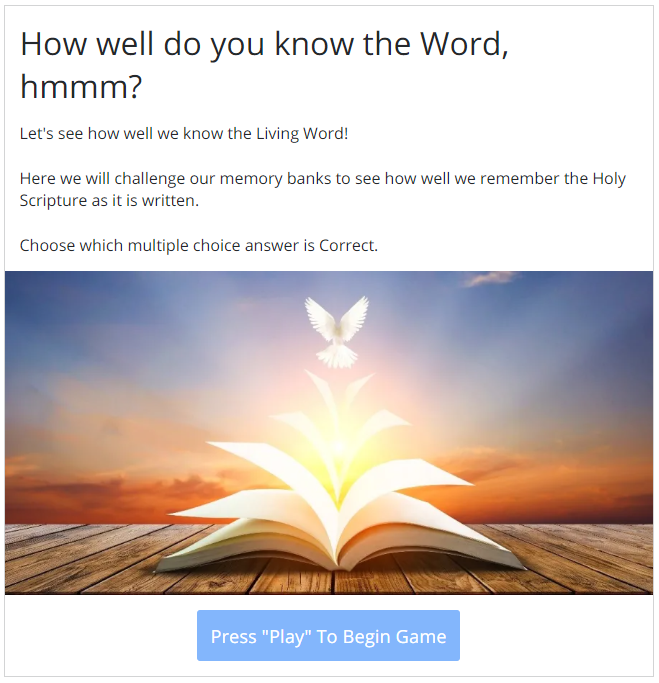





Thank you for sharing Jerry!
Very interesting article and I definitely can relate.
I’ve been using social media for ages now and I have seen social networking sites improve and evolve overtime! I was one of the first of my friends who opened a myspace account.
I also had a Friendster to connect with my friends in the Philippines!
And before twitter, I was an avid blogger on tumblr!
Obviously TikTok is here to stay, but who knows what will be the next Facebook or Instagram!
Thank you for sharing!
Hello,
You are welcome.
Thank you for commenting on this article. I must agree, social networking sites improve and evolve constantly. It seems as though as soon as you get comfortable using a certain type, a new type is introduced.
Again, you are welcome,
Stay Blessed,
Jerry
Hi Jerry,
Lots of good content here and you refreshed my memory on some of the original social media sites.
It will be very interesting to see how AI and VR both play into the next gens of social.
Also wonder how fast we will move to a society that resembles Ready Player One.
All the best.
Hello,
I appreciate you stopping by and I am pleased to learn you consider this good content.
Please have a Blessed day,
All the best to you as well,
Jerry
Thanks a lot for this valuable and comprehensive post about Social Networking Sites.
Since I’ve been using social media for so long, I’ve witnessed how social networking sites have developed and improved.
There is a ton of useful information here, and you helped me remember some of the early social media platforms.
Keep posting like this.
Hello,
You’re most certainly welcome for this valuable and comprehensive post.
Social networking sites have always seem to improve through technological discoveries, as well as, user friendly ideas form the average user feedback platforms.
Thank you for your comment.
Stay Blessed,
Jerry
The influence of social networks on business is a topic that is very important for modern business
given the great popularity and progress of social networks.
The progress of social networks also implies new trends, so companies should quickly adapt to them. The main advantage of social networks is availability, that is, access making social networks very easy for people of all ages.
Hello,
Thank you for taking time to comment on this article.
Have A Blessed Day,
Jerry
This is a very comprehensive article on social media.. it’s development and impact.
I experienced the beginnings with the huge group information sites. I think many of them were called bulletin boards.
Now, individuals can have much more interaction with other individuals as you have pointed out. The question you pose about how social media affects loneliness is a great question. I know that learning how to use the different social media platforms has changed the way I run my business.
Actually, having an online business at all is related to the importance of social media.
Thanks for this informative article.
You have raised some questions that I think will be ongoing.
Hello,
Thank you for your time and commenting on Social Networking Sites.
I definitely agree, that having an online business at all is related to the importance of social media.
Thank you again for stopping by.
Blessings,
Jerry
One cannot overestimate the power social networks have over our society these days.
Although I am not very much into them, I use them only for business, I find it amazing how many people spend countless hours into them daily and dedicate a lot of their personal lives and personal information in them.
Of course this is what social freedom brings and I am curious with such an oversaturation of social networks where things will be in 10 or even 20 years from now.
Hello Stratos K,
Thank you for stopping by and commenting on Social Networking Sites.
Social networks, as you have stated, does hold a lot of power. Especially when it comes to using them for business. If used correctly, you can reach all over the world and share your business reach with almost everyone with internet.
I do find it strange for people to spend soo much time on social network sites without monetizing in some sort of way. In my opinion, If you’re going to live there, you might as well monetize.
I definitely agree with you Stratos K,
Please Have A Blessed Day.